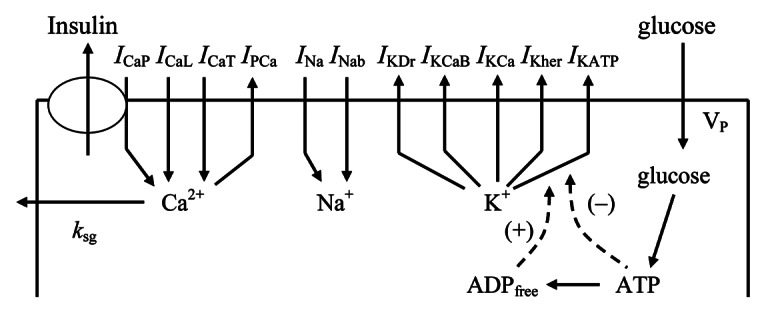
Figure 1. Schematic diagram of the ionic current, Ca2+ fluxes and exocytosis in human β-cell. Transmembrane currents are: ICaP is the voltage-gated P-type Ca2+ current, that is also responsible for insulin release (see text), ICaL is the voltage-gated L-type Ca2+ current, ICaT is the voltage-gated T-type Ca2+ current; IPCa, plasma membrane Ca2+ pump current; INa, voltage-gated Na+ current; INab, Na+ background current IKDr, delayed rectifier K+ current; IKCaB, Ca2+ and high voltage-activated K+ (BK channel) current; IKCa, Ca2+ activated K+ (SK channel) current; IKher is the human-ERG K+ channel current and IKATP, ATP-sensitive K+ channels current. Calcium enters the β-cells primarily through voltage-activated Ca2+ channels by diffusion along an inwardly directed electrochemical gradient. At the plasma membrane two processes are involved in transporting Ca2+ out of the cell; a Ca2+ pump and removal of Ca2+ sequestrated in insulin granules by exocytosis (coefficient ksq).
